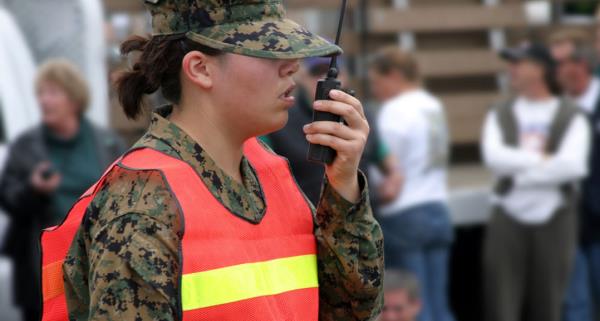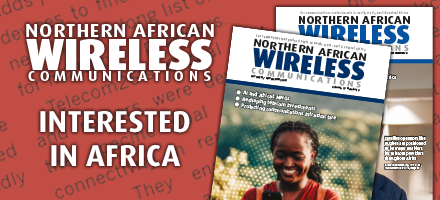05 July 2024

Sandra Wendelken, market insights manager, Tait Communications
While 5G technology grabs headlines around the globe and in Asia for its many extraordinary wireless advancements, land mobile radio (LMR) technology deployments continue to grow at a steady rate and provide mission-critical voice communications for enterprises and public sector agencies. Even with the continued growth of LMR, the importance of broadband technology for critical communications solutions cannot be overstated. Both broadband and LMR technologies have their place in our industry.
The transition from analog to digital LMR technologies is underway in many Asian markets. Globally, digital subscribers accounted for 72% of the total installed base in 2022, but Asia has the largest analog installed base, accounting for 50% of the world’s active analog users in 2022. While shipments of analog LMR terminals are declining in Asia, digital LMR radio shipments are increasing at a 13% compound annual growth rate (CAGR), according to Omdia.
Advantages of LMR
There are many benefits of LMR technology for public safety agencies, utilities, oil and gas firms, transportation agencies, and many other organisations that require secure, reliable communications within a defined footprint. While private 5G networks are topping the list of potential future revenue drivers for mobile network operators, LMR networks were the first private networks originating decades ago and bringing many advantages.
Reliability. Two-way radio networks are one of the most reliable forms of communications networks. LMR sites are generally built to 99.999% reliability with backup generators for power during extreme weather events. Major cellular system failures have happened already in 2024 to several mobile operators around the globe including in Asia. During emergencies, LMR networks continue to work when other networks are out of service.
Security. Digital LMR standards have built-in security protocols to ensure secure communications. No network or technology is foolproof and bad actors continue to evolve their strategies, but LMR networks provide one of the most secure communications options for organisations.
Coverage. LMR networks are built to an organisation’s specific coverage requirements. With strong network design, LMR sites are placed to maximize coverage where needed. Repeaters and other in-building systems enhance coverage in difficult places such as tunnels, mines, basements, and stairwells.
Diverse communications. Field workers often need to communicate within teams of colleagues. First responders talk with dispatch centers and with their fellow police officers, firefighters, and emergency management service (EMS) technicians. LMR technology provides the benefits of quickly relaying information to a group or speaking directly with a colleague. In addition, two-way radios provide for direct mode communications, allowing radio-to-radio connectivity. This is an important feature for fireground communications and other emergency scenarios and one that has been difficult to replicate in cellular network services.
Control. Organisations that deploy LMR networks control the system and can make adjustments to best fit their requirements. If the organisation does not have the technical staff to maintain the network, LMR equipment providers and services firms can offer ongoing managed services of the network and devices so the company or agency can focus on their mission.
Broadband options. Having access to reliable data is essential for police officers, firefighters, utility workers, transportation agency employees, field staff at energy firms, and many other employees in mission-critical industries. The number of options for broadband services is increasing, the technology is evolving, and new use cases will continue to help workers be prepared to do their jobs more safely and efficiently. LMR networks are evolving to include broadband technology or to be used seamlessly and effectively alongside broadband networks.
Digital LMR technology options
When an organisation’s communications network reaches the end of life, there are several digital radio technology standards that can be deployed depending on the organisation’s requirements. Digital standards are important because they ensure an open, flexible technology environment that contributes to a multi-vendor market with competitive pricing.
Project 25 (P25). P25 is one standard for the design and manufacture of interoperable digital two-way wireless communications products. Developed in North America with state, local and federal government representatives and Telecommunications Industry Association (TIA) governance, P25 has gained worldwide acceptance for public safety, security, public service, and commercial applications. Radio equipment that demonstrates compliance with P25 can meet a set of minimum requirements to fit the needs of users. While the P25 standard was originally created for public safety professionals, the technology is also used globally by utilities, transportation agencies, and other mission-critical infrastructure entities. P25 systems can operate in conventional or trunked modes, with two phases of the technology.
“Globally, digital subscribers accounted for 72% of the total installed base in 2022, but Asia has the largest analog installed base, accounting for 50% of the world’s active analog users in 2022.”
The P25 Compliance Assessment Program (CAP), overseen by the U.S. Department of Homeland Security (DHS), ensures interoperability between the equipment from the various P25 manufacturers. The TIA TR-8 Working Group that oversees P25 standards continually updates the standard, with recent enhancements to security for example.
Digital Mobile Radio (DMR). DMR is a digital radio standard specified for business mobile radio users developed by the European Telecommunications Standards Institute (ETSI) and first ratified in 2005. The primary goal is to specify affordable digital systems with low complexity. DMR provides voice, data, and other supplementary services. Products designed to the standard’s specifications are sold in all regions of the world. Most mission critical DMR deployments are comprised of Tier 2 conventional technology and Tier 3 trunked systems. The Applications Interface (AIS) was developed by members of the DMR Association with the goal of enabling applications to benefit from interoperability between an application and DMR infrastructure from different vendors.
The DMR Association also developed the DMR Interoperability Process (IOP) so that users and equipment suppliers benefit from a truly open multi-vendor market for DMR equipment. The interoperability process is a formal and consistent test mechanism allowing manufacturers to test that their products are compatible. The association lists more than 200 members on its website.
TETRA. The TETRA standard, also developed by ETSI, is a suite of standards covering different technology aspects, including air interfaces, network interfaces and its services and facilities. TETRA has been developed in releases (phases) known as TETRA Release 1 and TETRA Release 2. While the standard originated in Europe, with the first use cases in public safety, the technology is currently deployed in networks around the world across multiple vertical markets.
TETRA association TCCA also developed an Interoperability Certification process (IOP) to enable an open multi-vendor market for TETRA equipment and systems. The Interoperability Certification Process is managed by TCCA’s Technical Forum (TF) with targets and priorities set jointly between users, operators, and manufacturers. TCCA has various working groups and releases white papers around topics related to the standard.
Sarawak goes green with DMR
The Malaysian state of Sarawak has been investing in modern equipment for its Security and Enforcement Unit, including a Tait Communications digital radio system. Officials in Sarawak understand that the benefits of digital LMR technology are numerous and are deploying a digital system to enhance the state’s safety, security, and efficiency.
Sarawak State is located on the north-west coast of Borneo. As well as a substantial South China Sea coastline, it has land borders with Kalimantan (Indonesia), Brunei and the Malaysian State of Sabah. Sarawak is famous for its parks and incredible diversity of flora and fauna, but it should also be known as a modern, developing part of the world.
In fact, in many ways Sarawak is leading Malaysia in its adoption of new technologies, particularly green technologies. Sarawak is already producing hydrogen and is looking to export this. The state is also developing carbon capture and storage and recently commissioned an autonomous rail rapid transport system powered by green hydrogen. Sarawak is also developing plans to sell green hydro power to Singapore by undersea cable.
Representatives of the Sarawak Security and Enforcement Unit (UKPS) selected a DMR network that includes three land-based DMR Tier 3 sites, six Tier 2 base stations fitted on patrol vessels and a number of terminals. Customised software enables rapid bridging between DMR Tier 2 (conventional) and Tier 3 (trunked) with zero loss of audio quality.
The six 25m Island-class fast patrol vessels were taken into service by the Sarawak Coast Guard, a relatively new service within the state’s Security and Enforcement Unit. While the digital radio system was designed with the Coast Guard in mind, its shore-based sites would also be used to provide communications for land-based activities.
Of course, Sarawak and all organisations must assess their requirements and user needs before moving forward with any technology upgrade or deployment. Many factors will determine which digital LMR technology best fits an agency’s requirements. Once a technology has been selected and deployed, the digital communications network can enhance the safety, productivity, and security of the organisation for years to come.
Onwards and upwards
Digital mobile radio is growing steadily in Malaysia and most South Asian countries. With the many advantages that LMR networks offer and the interoperable and cost-effective digital standards that can address many mission-critical requirements, that upswing is expected to continue through at least the end of the decade.







